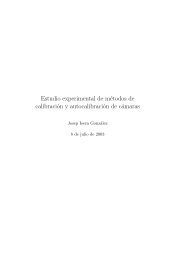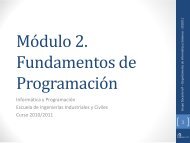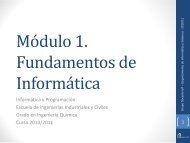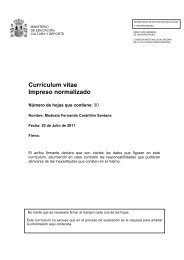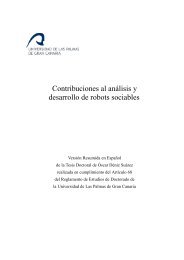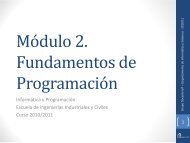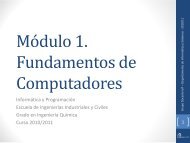PhD Document - Universidad de Las Palmas de Gran Canaria
PhD Document - Universidad de Las Palmas de Gran Canaria
PhD Document - Universidad de Las Palmas de Gran Canaria
Create successful ePaper yourself
Turn your PDF publications into a flip-book with our unique Google optimized e-Paper software.
CHAPTER 2. THE CASE OF SOCIAL ROBOTICS<br />
is valid in predicting future cases only as long as we are capturing knowledge about the<br />
solution, whether intentionally or not.<br />
The conclusion is: in any attempt to reproduce a social ability in a certain domain<br />
there is a serious risk of overfitting to the test cases. This means that in practice we will have<br />
a situation like that <strong>de</strong>picted in Figure 2.3.<br />
Original problem<br />
to solve<br />
Original domain<br />
Pick<br />
2<br />
Low<br />
error<br />
Figure 2.3: Situation when there is little knowledge about the form of the solution. We can<br />
be in one of three possibilities: 1) have low error in a domain different than the original, 2)<br />
work in the original domain but with large error, or 3) have low error in the original domain<br />
but in that case solving a problem different than the original.<br />
The reasoning path taken in this chapter has been the following. First, instead of<br />
autism, the condition of autistic savants was seen as more analogous to the social robots that<br />
we build, based on the unbalanced intelligences and capacities that are observed. Studies on<br />
the origin of that condition show that there are unconscious mental processes that provi<strong>de</strong><br />
healthy adults with the final useful products of reasoning: concepts. Finally, unconscious<br />
mental processes, useful as they are, are formally <strong>de</strong>monstrated to hin<strong>de</strong>r our capacity to<br />
reproduce some of our own social capacities. Based on these i<strong>de</strong>as, namely the unavoidable<br />
lack of robustness (specific to tasks that fall into the social range of human abilities) and the<br />
fact that we are concept-driven, a way to approach the <strong>de</strong>sign of social robots is outlined in<br />
the next chapter.<br />
Note that the i<strong>de</strong>as <strong>de</strong>veloped in this chapter constitute a coherent explanation of the<br />
well-known fact that certain tasks that are trivial for us are hard for computers/robots and<br />
in the set A we can obviously expect low error in the future. However, such reasoning is essentially equivalent<br />
to saying that the more (labelled) samples we know of the domain the more reliable the error figure measured<br />
on those samples. But knowing many samples of the domain is actually equivalent to knowing something about<br />
the solution function, only that it would be knowledge by enumeration, instead of by comprehension. Having<br />
little knowledge (by comprehension) of the solution is just equivalent to knowing only a very small part of the<br />
possible samples in the domain.<br />
22



